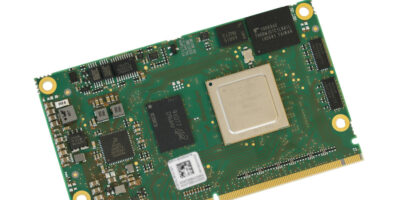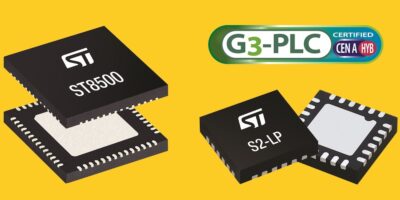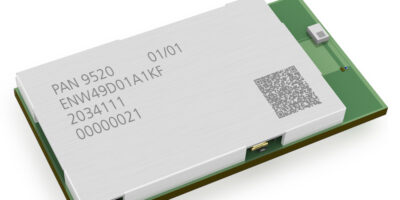Believed to be the first system on module (SoM) with NXP Semiconductor’s S32G274A processor.
The miriac MPX-S32G274A SoM features 1GHz quad Arm Cortex-A53 cores with Arm Neon technology organised in two clusters for applications and services. For real-time tasks, there are also triple dual-core lockstep Arm Cortex-M7 cores for which MicroSys offers support for dedicated FreeRTOS implementations beside NXP’s standard automotive support. Clustered and operated in lockstep mode, this set of heterogenous cores can support ASIL-D applications or any other functional safety standard comparable to IEC 61508. The ASIL D safety and hardware security has more than 10 times the real-time performance and networking throughput of NXP’s previous automotive gateway devices, reports MicroSys Electronics.
The SoM integrates 4Gbyte of soldered LPDDR4 RAM at 3200Mtransfers per second, 16Gbyte eMMC non-volatile memory and 64Mbyte QuadSPI flash. External SD card storage can be multiplexed with the on-board eMMC.
The SoM offers an extensive range of generic and communication interfaces including four SerDes interfaces configurable as PCIe Gen3 2×1 or 2×2, four Gigabit Ethernet, 18x CAN FD bus, two FlexRay, and four LIN. There are also 14 GPIOs, 12 analogue inputs (ADC), three SPI, two UART, one USB and three I2C interfaces.
For trace and debug tasks, the SoM supports Aurora and JTAG interfaces. MicroSys also offers a board support package including bootloader configuration and all required Linux drivers.
The SoM offers multiple native CAN interfaces as well as comprehensive FlexRay, LIN and Ethernet support. Target markets are real-time connected vehicles, mobile machinery and automotive test and measurement equipment. It can also be used for data loggers, edge gateways and fail-safe programmable logic controllers (PLCs).
There is native support for 18 CAN interfaces, making the MicroSys SoM particularly suitable for developing comprehensive vehicle networks. The SoM is an alternative to using generic expansion buses to connect CAN controllers which can generate high interrupt loads on the main processor. The other alternative is to use FPGAs but these can be expensive, requiring additional development resources for FPGA programming.
The NXP S32G2 processor was developed specifically for vehicle networks and the MicroSys miriac MPX-S32G274A is the world’s first SoM to integrate the processor, says the company. “OEMs benefit from an application-ready building block for their connected real-time controllers in automotive and other functional safety applications. They also benefit from high computing performance, faster Ethernet and automotive connectivity including massive native CAN support, plus comprehensive functional safety and security features,” explains Ina Sophia Schindler, CEO of MicroSys Electronics.
MicroSys Electronics offers application-ready hardware and function-validated hardware-related software. It also offers customer-specific carrier boards and system level design services. These extend to SIL certification for any markets where functional safety standards analogue to IEC 61508 are required, including railway technology (EN 50155), aviation (DO-160), stationary and mobile machinery (ISO 13849), as well as manufacturing robots (ISO 10218), control systems (IEC 62061), and drive systems (IEC 61800‑5‑2). Approvals in the aviation context (DO-254/DO-160) are also greatly simplified by the existing manufacturer documentation.







